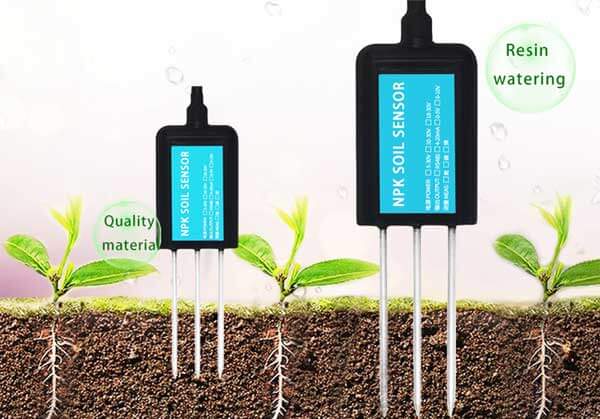Efficient water management is essential for sustainable agriculture, and optimizing irrigation practices is a key component of this. Real-time monitoring of soil moisture using sensor technology has revolutionized irrigation practices by providing accurate data on soil water content. This article explores the significance of real-time soil moisture monitoring and highlights the role of sensor technology in improving irrigation efficiency for sustainable farming.

Importance of Irrigation Efficiency in Sustainable Agriculture:
Irrigation plays a vital role in crop production, particularly in regions where rainfall is insufficient. However, inefficient irrigation practices can lead to water wastage, reduced crop yield, and environmental degradation. Optimizing irrigation efficiency is crucial for conserving water resources, minimizing energy consumption, and sustaining agricultural productivity.
Real-time Soil Moisture Monitoring:
Real-time soil moisture monitoring involves the use of sensors to measure and track soil water content at regular intervals. These sensors provide accurate and up-to-date information on soil moisture levels, helping farmers make informed decisions about irrigation timing, duration, and volume.
Types of Soil Moisture Sensors:
a. Tensiometers: Tensiometers measure soil moisture tension or the force required to extract water from the soil. They provide an indirect measurement of soil moisture by assessing how tightly water is held in the soil.
b. Capacitance Sensors:
Capacitance sensors measure the dielectric constant of the soil, which is related to soil moisture content. These sensors use electrical conductivity to estimate the amount of available water in the soil.
c. Time Domain Reflectometry (TDR) Sensors:
TDR sensors send electromagnetic pulses into the soil and measure the time it takes for the pulse to return. This measurement is correlated with soil moisture content.
d. Neutron Probe:
Neutron probes measure soil moisture by emitting fast neutrons into the soil and measuring the number of slow neutrons that return. This method provides accurate and reliable data but requires specialized equipment and training.
Benefits of Real-time Soil Moisture Monitoring:
a. Precision Irrigation: Real-time soil moisture monitoring enables precise irrigation management by providing accurate data on soil water content. Farmers can determine the optimal timing and duration of irrigation, ensuring that water is applied only when necessary and avoiding over- or under-irrigation.
b. Water Conservation:
By optimizing irrigation practices based on real-time soil moisture data, farmers can conserve water resources. Targeted irrigation reduces water wastage, minimizes runoff, and helps prevent soil erosion, promoting sustainable water management.
c. Energy Efficiency:
Efficient irrigation practices result in energy savings. By avoiding unnecessary irrigation cycles, farmers can reduce the energy required for pumping and distributing water, contributing to overall energy efficiency in agriculture.
d. Enhanced Crop Productivity:
Proper irrigation management based on real-time soil moisture data ensures that crops receive adequate water when they need it most. This promotes healthy root development, nutrient uptake, and overall plant growth, leading to improved crop productivity and quality.
e. Environmental Stewardship:
Real-time soil moisture monitoring helps prevent excessive irrigation, which can leach nutrients and agrochemicals into groundwater or nearby water bodies. By minimizing nutrient runoff and reducing the risk of water pollution, this technology supports environmental stewardship and protects ecosystems.
Integration with Smart Irrigation Systems:
Real-time soil moisture sensors can be integrated into smart irrigation systems, which utilize advanced technologies such as IoT (Internet of Things) and data analytics. These systems automatically adjust irrigation schedules and volumes based on real-time sensor readings, weather forecasts, and plant water requirements. This integration enhances irrigation efficiency, reduces labor costs, and optimizes resource allocation.
Challenges and Considerations:
a. Sensor Calibration and Maintenance: Soil moisture sensors require periodic calibration to ensure accurate readings. Regular maintenance, including cleaning and proper installation, is crucial for optimal sensor performance.

b. Soil Heterogeneity: Soils vary in composition and texture, which can affect the accuracy of soil moisture readings. Calibration and adjustment based on soil type and conditions are necessary for reliable data interpretation.
c. Cost-effectiveness: Soil moisture sensors can be costly, especially when large-scale deployment is required. However, the long-term benefits in terms of water savings, increased crop yield, and environmental sustainability often outweigh the initial investment.
Conclusion: Real-time monitoring of soil moisture using sensor technology has significantly improved irrigation efficiency in agriculture. By providing accurate and timely data on soil water content, these sensors enable farmers to optimize irrigation practices, conserve water resources, and enhance crop productivity. Integrating real-time soil moisture monitoring with smart irrigation systems further enhances efficiency and sustainability in water management. Embracing this technology and implementing data-driven irrigation strategies are crucial steps toward sustainable agriculture, ensuring the responsible use of water and the long-term viability of farming systems.
